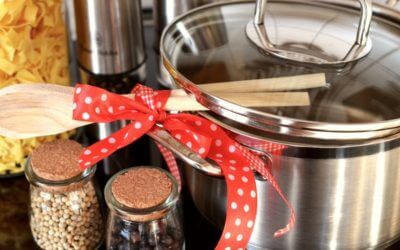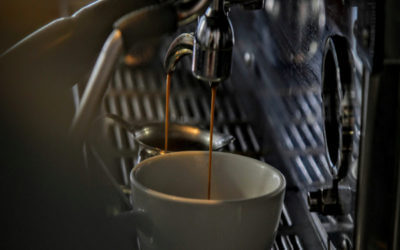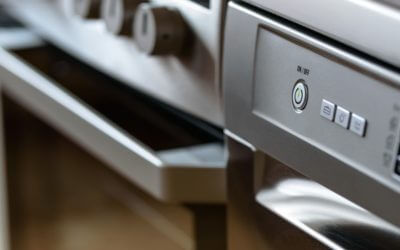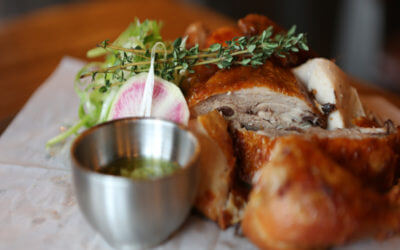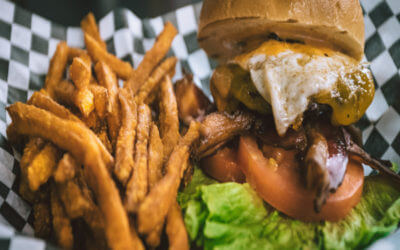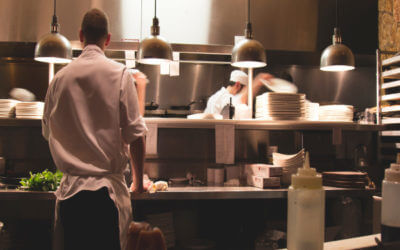How to Make Your Silverware Sparkle and Shine
January 1, 2018From blending beverages and creaming soups to making dressings and dips, commercial blenders are diverse and an efficient restaurant equipment.
Thus, they are considered by many to be must-have items on the restaurant equipment list. Which blender is best for your restaurant? This article will help you choose a blender that is worthy of being the next addition to your restaurant equipment collection.
Jar Blenders
Jar blenders are popular for their wide range of features, large holding capacity, and variety of functions and blade designs.
If you choose a high-end blender, it will likely come with a glass jar, rather than a plastic one. To make sure your new piece of restaurant equipment pours nicely, look for a blender that has a prominently curved pouring spout. If the spout is flat, or if the jar doesn’t have a spout, you’re likely to end up with a lot of messes on the counters or the floor.
Immersion Blenders
Best for basic pureeing, mixing and blending, an immersion blender is a piece of restaurant equipment that will save you valuable time, as it allows you to blend food right in the bowl or hot pot it’s already in. Also known as hand blenders or stick blenders, this restaurant equipment adds convenience to the kitchen. With their smaller blades, they can easily mix small amounts of foods as well.
Immersion blenders can be kept in a drawer or mounted on the wall of your commercial kitchen. For added convenience, some immersion blenders are cordless. This is a helpful feature when this type of restaurant equipment gets passed around the kitchen for multiple uses.
For further functionality, some immersion blenders come with accessories that allow for additional functions, such as crushing ice or chopping.
Multifunction Restaurant Equipment Blenders
For serious commercial use, multifunction blenders offer a powerful punch that make them worthy of being part of every kitchen’s restaurant equipment list. Their sturdy construction and high power makes multifunction blenders great for a wide variety of functions, from processing foods to making juice and more.
While multifunction blenders are more expensive pieces of restaurant equipment than jar or immersion blenders, they are a solid investment. For one thing, they are made to handle tough jobs and last longer. They can also replace several kitchen appliances, saving you valuable kitchen space – not to mention the money you would have spent adding the other appliances to your supply of restaurant equipment.
Some multifunction blenders are even more versatile pieces of restaurant equipment, because they have accessories that allow for chopping or processing.
Choosing the Right Blades and Power
If you plan on using your blender to grind ice and make smoothies, your blender should have a stainless steel ice-crushing blade and run on at least 500 watts of power. To chop and grind food, choose a blender with a chopping blade and processing abilities. For light blending, stirring, mixing and pureeing, a standard blender will be suitable restaurant equipment.
No matter which blender you choose, make sure it can stand the test of time and is suited to your restaurant’s short-term and long-term needs. That’s what great restaurant equipment is for, after all!
What’s in a Cooking Pot, How to Choose the Right One?
As a restaurant owner, your cooking needs might vary. Did you know that a good quality pot can greatly improve your cooking experience, while also improving the quality of your cooking? This cooking equipment is a very important one that cannot be done away with...
5 Things Every Restaurant Owner Should Do Before Buying Used Kitchen Equipment
Equipping your restaurant properly can cost a lot of money, so buying used kitchen equipment is the go-to choice for many restaurateurs. Buying used kitchen equipment for a restaurant is a bit different than buying used equipment for your home, however. You will...
Top Restaurant Technology Trends in 2018
When looking to buy restaurant supplies, you want to be on the leading edge of technology trends. This will keep your kitchen running smoothly. Let’s take a look at some of the most recent trends in restaurant supplies technology. 1. New Payment Options Who would...
5 Different Ice Shapes and Why You Should Care About Them
Ice makers are very popular in the restaurant and foodservice community because they eliminate the need to buy ice every day. And of course, adding an ice maker to your collection of foodservice equipment means you will always have ice on hand when you need it. An...
Pulping and Grinding: A Starter’s Guide to Reducing Commercial Food Waste Costs
For most restaurant owners and managers, the expenses involved in making meals are always under careful consideration. Water is needed to prepare, cook and wash food; power is necessary for food prep, cooking and cooling, and so on. However, how many of us consider...
Choosing the Right Milk Cooler: Cold Wall or Forced Air?
In a restaurant, milk is an essential to have on hand for coffee and other café-style beverages, for serving with kids’ meals, and as a key ingredient in many recipes. Keeping your milk properly chilled can be difficult without the proper restaurant equipment....
How to Choose Your Next Commercial Meat Smoker
The movies that connect with us on a personal level are the ones that linger in our memories forever. Anyone who has used a commercial meat smoker knows that they have a huge influence on the taste of a meal. You need to have just the right kitchen equipment to get a...
Are High Speed Ovens Too Good to be True?
You might have heard a few of the bold claims that foodservice equipment manufacturers have been making about high speed ovens, but they can’t be possible, right? Cooking three times as faster as regular ovens? Five times as fast? Fifteen times as fast? It may seem...
Choosing the Right Food Storage Containers for Your Restaurant
Choosing the right kitchen supplies will make a difference in your restaurant. Whether it is heavy duty kitchen equipment or food storage containers, each piece of equipment plays its own important role. Today, we are going to talk about how to choose the right food...
Tipton’s Guide to Perfect Poultry Trussing
Do you ever truss birds in your commercial kitchen? Trussing is a fantastic cooking technique because it makes poultry cook faster, look more attractive and taste better. If your commercial kitchen prepares poultry, you don’t want to miss these trussing tips. Trussing...
How to Eliminate Excess Condensation in Your Kitchen
Is your commercial kitchen getting steamy? If so, you could have more than just an uncomfortable working environment on your hands. Excess moisture in your commercial kitchen can result in the corrosion of equipment, the development of mold, and even damage to your...
The DIY Guide to Your Restaurant’s Own Garden
Stocking your restaurant supply with your own home-grown herbs and produce can truly bring your dishes to life. When it comes to food, everyone knows there’s nothing like homemade and home-grown. Having your own culinary garden, however large or small, can help you...
5 Reasons a Meat Grinder Will Set Your Burgers Apart
The more you do to prepare your foods in-house with the right kitchen equipment, the fresher and more flavorful your dishes become. There are all sorts of restaurants offering fast-food style burgers, but some diners are looking for the real deal. A fresh, juicy...
Pest Preventions to Implement in Your Commercial Kitchen
Restaurant pests: it’s something that few people want to think about. Like it or not, pest management is an essential consideration for every commercial kitchen. Offering food, shelter and water, the unprepared commercial kitchen naturally provides everything pests...
Choosing the Right Material for Your Cooking Equipment
Kitchens are very unique to their chef. Just like a car mechanic has a toolbox unique to them, so is the cooking equipment in a kitchen. And over time, the same cooking equipment become a natural extension of the chef. What tools are you using in your kitchen? It...

